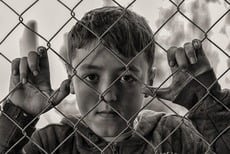Poverty is the inability to secure the minimum human needs of food, clothing, housing, education, and health. When a person is unable to fulfil these basic needs, it leads to pain and distress.
Even after 74 years of Independence, India is still struggling with the problem of poverty. After going through this ‘ Essay on Poverty in India’ you will learn about the Features of Poverty in India, the Causes of Poverty in India, and Anti-poverty measures taken by the government of India to reduce the poverty in India.
Daily Test - Attempt Now

Essay on Poverty in India
Features of Poverty in India
Variations: In the mid-seventies, the poverty ratio (which was more than 50%) got reduced to 22% by the end.
Trend: There has been a secular decline in the poverty ratio. Because of the increase in population, the number of poor people remained stable for a long period of time.
Interstate variations: More than 90% of India’s poor are living in Bihar, Odisha, Maharashtra, Tamil Nadu, Madhya Pradesh, Andhra Pradesh, West Bengal, and Uttar Pradesh. Gujarat, Kerala, Haryana, Goa, and Punjab have a low poverty ratio.
Vulnerable groups: Among the economic groups, the most vulnerable groups are the rural agricultural labour households and the urban casual labour households. On the other hand, among the social groups, the most vulnerable groups are scheduled castes and scheduled tribes.
Inequality of income within a family: Women, female infants, and elder people suffer more than other members of the family. They are the poorest of the poor.
Rural and urban poverty: Nearly 75% of poor people live in rural areas. Many poor people from rural areas migrate to urban areas in search of jobs. However, the industrial and service sectors cannot provide sufficient jobs to these poor people.
Causes of Poverty in India
Inequality in the distribution of income and wealth: During the plan periods, the national income of India has been increasing, but it has not been distributed properly among the different sections of people. The majority of the income of the economy has been enjoyed by the rich. These inequalities in the distribution of wealth and income have worsened the problem of poverty in India.
Underdevelopment of an economy: Physical and natural resources are underutilized because of a lack of technology, capital, and entrepreneurial ability. Therefore, the productive capacity and gross domestic product of the economy are low. Primitive technology of production occurs in the agricultural sector. They lack irrigation facilities, fertilizers, and a high-yielding variety of seeds. This backwardness in agriculture has given rise to rural poverty.
Price inflation: Upward trends in the consumer price index during the plan periods led to a fall in the real income of fixed and low-income earners. It decreases purchasing power and hence a lower standard of living and a higher incidence of poverty.
High rate of population growth: Because of the increase in population, the dependency burden has increased. Hence, the provision for their minimum needs becomes a crucial problem. This high growth rate of the population also signifies lesser availability of health facilities and other amenities and therefore a lower standard of living.
Illiteracy: Because of a lack of literacy, Indian farmers fail to learn new methods of cultivation, and adopt new tools and implements. Also, the village moneylenders succeed in cheating them more easily. On the other hand, urban people are employed as unskilled workers and receive very low wages in return. They mostly live in slums and they lead miserable lives.
Social causes: Many social factors such as the caste system, religious faith and beliefs, and joint family system have hindered the process of economic growth.
Political causes: The policies of the colonial government have ruined traditional handicrafts and discouraged the development of textile industries. Even after Independence, the government failed to protect the interest of the poor.
Anti-Poverty Measures in India
The anti-poverty strategy of the government is based on the promotion of economic growth and targeted
anti-poverty programs.
National Rural Employment Guarantee Act (NREGA), September 2005
- 100 days assured employment every year to every household in 200 districts; will be extended to 600 districts later.
- One-third of jobs are reserved for women.
- The Central Government will establish National Employment Guarantee Funds.
National Food for Work Programme (NFWP), 2004
- Launched in 150 most backward districts.
- Open to all rural poor who are in need of wage employment and manual skilled labour.
- 100% centrally sponsored scheme and food grains free of cost. Pradhan Mantri Gramodaya Yojana (PMGY), 2000
- Additional central assistance to states for basic services.
Swarnajayanti Gram Swarozgar Yojana (SGSY), 1999
- To assist poor families above the poverty line by organizing them into self-help groups through a mix of bank credit and government subsidy.
Rural Employment Generation Programme (REGP), 1995
- To create self-employment opportunities in rural areas and small towns.
- To create 25 lakh jobs for the program under the Tenth Five-Year Plan.
Prime Minister Rozgar Yojana (PMRY), 1993
- To create self-employment opportunities for educated unemployed youth in rural areas and small towns.
- To help set up small businesses and industries
You Asked, We Listened – Get Free Access to All Writing Lists 😍😍
Also, Read

Essay on Poverty

